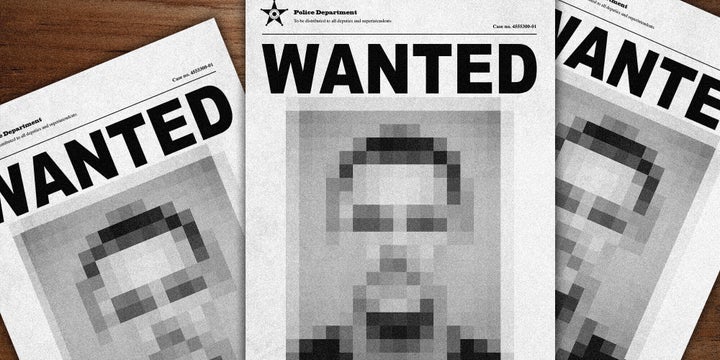
In 1999, bestselling author Stephen King took the unusual step of pulling one of his novels out of print. “Rage,” a bloody revenge fantasy about a troubled teenager who brings a gun to school, had been found inside the locker of a school shooter, a 14-year-old Kentucky boy who killed three girls as they prayed before class. By then, the book had already been linked to three other school shooters. King decided to act.
“My book did not break (them) or turn them into killers; they found something in my book that spoke to them because they were already broken,” he wrote in an essay in 2013. “Yet I did see ‘Rage’ as a possible accelerant which is why I pulled it from sale. You don’t leave a can of gasoline where a boy with firebug tendencies can lay hands on it.”
These days, the media is weighing a similar dilemma: Does detailed reporting on perpetrators of mass shootings function as an accelerant, inspiring would-be attackers to pull the trigger?
A growing movement, led by gun control activists and law enforcement and academics, is pressuring news organizations to reconsider how they report on mass shooters. They argue that fame is the end goal and news coverage may encourage copycat behavior.
They recommend that the media stop naming the perpetrators or using photos of their faces. They want to see them erased from the narrative.
In recent years, many media outlets have taken heed of this advice and are minimizing the emphasis on perpetrators’ names, photos and motives, if not omitting them entirely. It is a surprisingly quick change in news practices, motivated by the noble goal of reducing harm. (HuffPost extensively covers the relevant details about the shooter’s history and motivating ideology, but dedicates much less coverage to the suspect’s personal life than in years past. Photos of alleged shooters are used sparingly, if at all. Names are used for clarity but not repeated ad nauseam.)
But some experts worry that in its more extreme forms, the movement to cut shooters from news coverage may have unforeseen consequences and undercut the public’s ability to understand the violence it faces.
It’s impossible to know whether would-be shooters will be less likely to commit attacks without the promise of name recognition. But Northeastern University criminologist James Alan Fox thinks the focus on the name and photo is misplaced.
“Names and faces are not what inspire copycats,” he said. “What inspires copycats is the act, not the actor.”
Footage of the crime scene, interviews with scared survivors, photos of grieving families ― all these elements could potentially serve as a trigger for an individual interested in causing pain to a community, he noted.
“There’s some people who would like to create that kind of drama,” he said. “They’d like to see other people suffer because they’re unhappy.”
Fox said he was concerned with where to draw the line on not naming suspects.
“Do we not mention the names of people who kill one person? Do we not mention the names of rapists? What about Timothy McVeigh, he didn’t use a gun,” he asked. “Do you have to kill a certain number to not have your name in the paper? What about white supremacists?”
Fox, who is also harshly critical of the media’s coverage of mass shootings, called for a balance between providing important details and glorifying the attacker.
News organizations should include information on the shooter’s background, he said, such as their work history, their romantic relationships, their access to weapons, previous criminal background and other potential red flags. If the suspect released a video or a document, report what is important to understand the crime. It is essential to understand the motivation behind those who kill for political or ideological reasons ― omitting this information is irresponsible and misleading.
But there’s no need to know frivolous and irrelevant details, such as what they ate in the days leading up to the shooting.
The Limitations Of Generic Language
Instead of using perpetrators’ names, some critics want the media to employ neutral terms like “attacker,” “suspect” or “shooter.”
For Jackson Katz, an author and educator, one obvious limitation of this approach is that it erases gender from the story. While both boys and girls are bullied in school, struggle with mental illness and have access to guns, the perpetrators of mass shootings are overwhelmingly male.
“Gender is at the heart of this,” he said. “It is not about children or young people who are being marginalized, bullied and humiliated. It’s about boys and young men in a culture that teaches them that the way to react to the shame and humiliation and loss that you feel is through redemptive violence. That’s a gendered narrative.”
By removing the gender of the perpetrator from the story, we miss a crucial link, he said. The same is true of race. Many high-profile mass shooters in the past few years have been white men. Without photos of the perpetrators, that pattern is harder to discern and race is essentially cut from the story.
Katz also worried about the impact of passive language in coverage about mass shootings. In a TED talk, he takes viewers through a linguistic exercise developed by feminist scholar Julia Penelope that shows how responsibility can be deflected from those who commit violence.
It starts with a simple, active English sentence: “John beat Mary.” Then the sentence is changed to “Mary was beaten by John.” In the third sentence, it becomes “Mary was beaten.” Finally, the sentence becomes “Mary is a battered woman.” The victim’s identity is now linked to what happened to her, and the perpetrator is — poof — gone.
Amanda Marcotte, a politics writer at Salon, shared a similar concern on Twitter.
“This whole thing where the shooter’s identity and motives are concealed from the public is leading to a lack of coverage of shootings,” she wrote. “Shootings are beginning to be covered like the weather, as events that just happen and the shooter’s autonomy is largely erased.”
The Spread Of Violence
Ultimately, many mass shooters are inspired by those who come before them. The Pulse nightclub shooter called the Boston Marathon bombers his “homeboys” in a 911 call he made during the attack. The Sandy Hook Elementary School shooter was obsessed with the Columbine attackers. The man who shot two colleagues on live television in Roanoke, Virginia, said he was influenced by the Virginia Tech shooter.
Some academics believe that sensational media coverage of mass shootings may inspire vulnerable individuals to act out on previously suppressed urges, and a number of studies have been done on the “contagion effect,” examining whether mass shootings can spread rapidly through society like contagious viruses.
In 2015, Sherry Towers, a researcher at Arizona State University, analyzed shootings in schools as well as killings in which at least four people died — incidents that would typically receive national news attention — and found that they were clustered together. After a mass shooting, there was an increased chance of another mass shooting for the next 13 days. Notably, shootings with three or fewer deaths, which generally elicit less attention from the media, did not result in an increased likelihood of another shooting.
“We hypothesize that media might be playing a role,” she told HuffPost. “We can’t prove that with the data because we did not look person by person to see whether or not they were inspired by it. Some of them left manifestos but for the most part, mass shooters don’t. We don’t often know what their ultimate motivation was.”
The research is far from conclusive. Adam Lankford, a criminologist at the University of Alabama, looked at the same data set as Towers and did not find statistically significant evidence of contagion within 14 days of an incident. Even so, Lankford is worried about how the media may be encouraging killers by turning them into de facto celebrities.
“They want to go from being a nobody to being a somebody and they’re calculating accurately that if they commit a mass shooting and kill a large number of innocent people that they will get that reward,” he said. The death toll of mass shooters has increased since 2010, he said, as attackers recognize that more victims means more media attention. “If the media stops giving them fame, it removes that incentive.”
Lankford is one of the 149 experts who signed an open letter asking news organizations not to name perpetrators or show their photos in news coverage.
He noted that even if the news media stops using the names of shooters in most instances, their identities will still be known by law enforcement and by members of the local community where the crime took place.
“No one is calling for a full blackout,” he said. “But quantity matters. When information about a perpetrator is broadcast to 350 million people, the chances that a tiny percentage of them are going to find it inspiring and exciting and want to imitate it are much higher than if it’s only broadcast to 10,000 people.”
Responsibility To The Reader
One of the principal responsibilities of the media is to provide accurate, complete information to readers. Voluntarily holding back the name of the perpetrators and details of their lives may come across as paternalistic to some readers, and even backfire.
“We’re living in an age of social media,” said Jeffrey Simon, a visiting lecturer in the UCLA department of political science and an expert on terrorist attacks in the U.S. “If a media organization doesn’t publish the name, people are then going to go online and try to learn more about the individual. You’re almost giving them more publicity, because now people are going to be really curious as to who this person was,” he said.
While it is understandable to try to strip mass shooters of notoriety, it is important to get to the root of their violence, and that requires seeing them as human beings, he said.
“We have to know as much as possible,” he said. “How did this individual get to that point? Were there any indicators or anything that somebody could have done to have prevented it?”
There’s also the very real possibility that the media’s ability to gather news could be damaged by the push to omit information about shooters.
It could give “public officials an excuse to withhold information, impede investigative reporting on what makes killers tick, or provide the gun lobby with a way to point fingers at the news media in an effort to deflect pressure for common-sense laws,” the editorial board for USA Today wrote in 2015. News organizations are supposed to find facts and report them, without fear or favor, they added. “Once the news media get caught up in the potential consequences, it will infect everything they cover.”
All of the experts HuffPost spoke to agreed that the media is not doing a good job covering mass shootings. But diluting the identity of the shooter isn’t the fix.
Unlike Stephen King, the media cannot simply take the story out of print.
